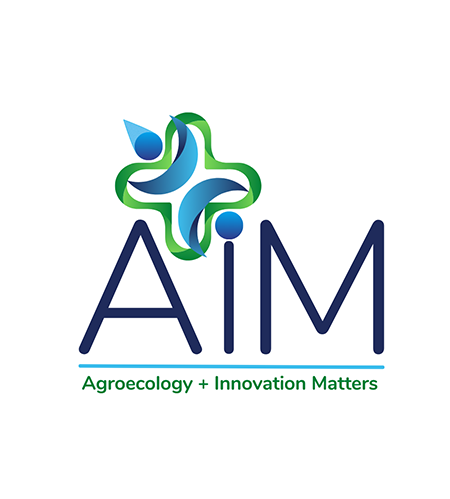Working in the collar counties of Illinois, Conservation Planners Aidan Woltman and Olivia Winters were like two peas in a pod. Although Aidan was the McHenry County Conservation Planner and Olivia represents Kane County, they were able to split up their workload between Lake, McHenry, Kane, and DuPage counties. When asked about their favorite part of the position, both said, “Working together.” However, after spending two years as a Conservation Planner, Aidan began a new position as the McHenry-Lake County Resource Conservationist on March 20th. Although their local SWCDs had not been involved with NRCS work over the past two years while Aidan was working as a planner, he was excited to share that the SWCDs both in Woodstock and St. Charles recently signed agreements to assist with the CRP program. He said, “I didn’t want to lose conservation planning, because I’m a planner too. I got a lot of job approval authorities. I like this kind of work.” Mentioning that he’s looking forward to picking up the additional duties that come with the RC position as well, he added, “I still want to be working with the producers in as many ways as I can.”
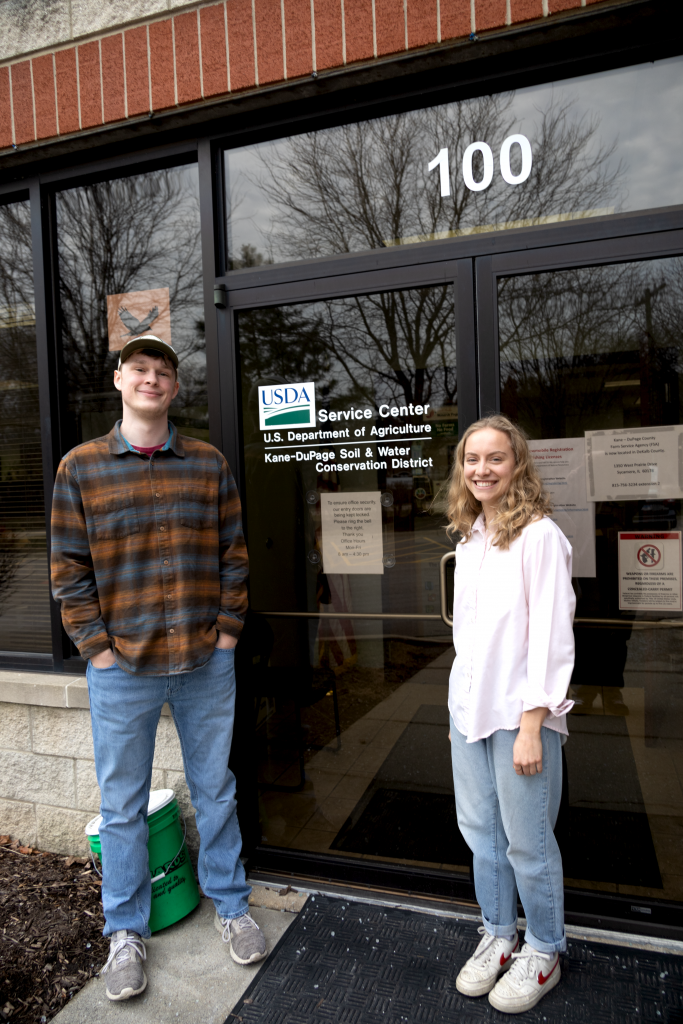
Although many planners across the state focus largely on CRP, Aidan and Olivia said this makes up a very small percentage of their work. Instead, they are working more with producers who have small acreage and focus mostly on EQIP. Aidan said, “CRP probably makes up 10 percent, maybe less, of our overall workload. A lot of the work that we do is helping producers who have, for the most part, less than five acres and are trying to grow vegetables or cut flowers in urban environments. The word kind of spread around throughout our four counties that NRCS is here to help provide cost share for high tunnels…. We try to influence these producers to follow through with other environmentally beneficial practices with their high tunnels, and those are usually pollinator habitats, cover crops, sometimes conservation cover if erosion is an issue, but a lot of the times these people are just installing things in their backyard, so we don’t get that practice too often.”
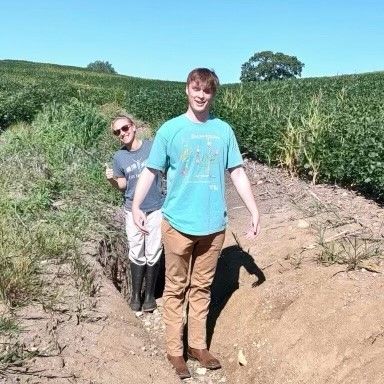
When working on high tunnel applications, Olivia said, “ To increase their environmental quality incentives, we usually plan [NRCS Conservation Practice Standard] 420 wildlife habitat planting along with it… It could be .01 acres, it could be 10 acres, but basically it involves wildflowers and native grasses getting planted for the benefit of pollinators. That’s basically, as Aidan likes to call it, our bread and butter.” Aside from high tunnels, producers have come to Aidan and Olivia for assistance with brush management and getting rid of buckthorn and reed canary grass, which they work on replacing with pollinator habitats.
Both said their interest in conservation began in college. While pursuing her degree in zoology at Olivet Nazarene University, Olivia took courses that focused on conservation and worked for a private contracting company where she focused on eradicating invasive species from forest preserves around Cook County. During this time, she learned quite a bit about plant identification and realized how much she enjoys working outdoors. She also worked in the organic preparation department of a lab in Naperville, testing soil and water samples. Shortly after graduating, she started the Conservation Planner position. Describing her love for this work, she said, “I just can’t wait to get outside and conserve soil and water and just help people- because that’s also a big portion of this job I enjoy as well. Not only caring for the environment, but also caring for people in the process, and we do that with our farmers.”
Aidan graduated from Illinois State University in December 2022 with a degree in biology and a minor in environmental studies. His interest in conservation began when he took a geography course focused on National Parks, and from there decided that he wanted a job where he could work to preserve natural resources. Describing one of his favorite work activities, he said, “I love doing compliance reviews. It’s just so fun. Once a year in the early summer, we go out and we review these randomly selected tracts that are either highly erodible land or they have wetland in their tract, or it could be both. And you just go out, walk the field, look for gullies, look for any other crazy signs of erosion, at least for highly erodible
land. And if you’re looking at a wetland, you’re just making sure that the aerial imagery matches what you’re looking at now and that all the trees that were there maybe 10 years ago are still there now, and just making sure that people aren’t destumping trees in wetlands. So,
it’s just a great time to walk around at all these different fields and do some investigating.” Olivia agreed, adding, “I would echo that. It’s kind of like a puzzle, but an outdoor puzzle.”
They have also been partnering with the American Bird Conservancy on some plans related to RCPP2727- Improving Oak Ecosystems Health in the Great Lakes Region. Aidan said, “We have worked very closely with the American Bird Conservancy to set up forest management plans for our producers in our four counties if they are interested in signing up. And
now those forest management plans are coming back to us, and they are looking to install these practices that include brush management, timber stand improvement, tree and shrub establishment, tree and shrub site prep, and other things, but it’s all centered on adding oak habitat for migrating birds… The American Bird Conservancy hired some foresters to help do these plans, so we get to work with them often as well… They really know their stuff. When we go on field visits with them, I always feel like I learn a lot.” While Aidan has moved into his new position, Olivia will continue working on this project. She added, “We got so many applications, and they all went through. So, we’ve got a lot of forest management plans, and now it’s onto the next step.”
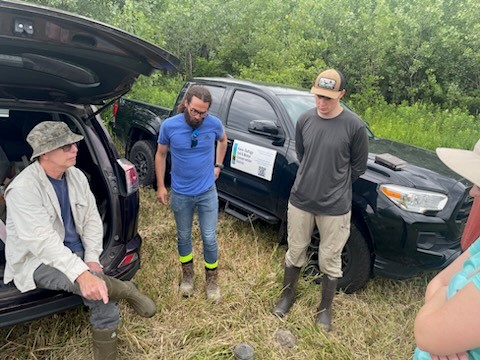
Regarding the importance of protecting birds, Aidan said, “When we do these endangered species reports and get the roster of the species that could be in the area, I’ve been noticing that they are mostly all waterfowl or birds that nest in ponds, and that’s due to us draining these wetlands and creating farm fields with it. So, learning that kind of stuff is really eye opening to me.”
Aidan said that another one of his favorite projects to work on has been focused on Glacial Park, which encompasses over 3,400 acres and includes more than 490 acres of nature preserve. “Glacial Park, in my opinion, is one of the prettiest places in McHenry… So, I get to work with McHenry County Conservation District in creating these things called compatible use agreements, so that they can do their prescribed burns, they can do trails and walkways and other kinds of maintenance work, so it’s done to NRCS specs and standards,” he said.
According to their District Conservationist Michael Brennan, Aidan and Olivia have provided a great deal of support and allowed their off ices to reach a broader population and serve more
clients. He said, “Aidan and Olivia have been very open to taking on whatever has been thrown at them. They’ve worked on forest management plans, they have worked on nutrient management plans, they have worked on urban agriculture, kind of a whole array of things.” He added, “We value the opportunity to work with them. They have been a breath of fresh air, so we appreciated having them.”
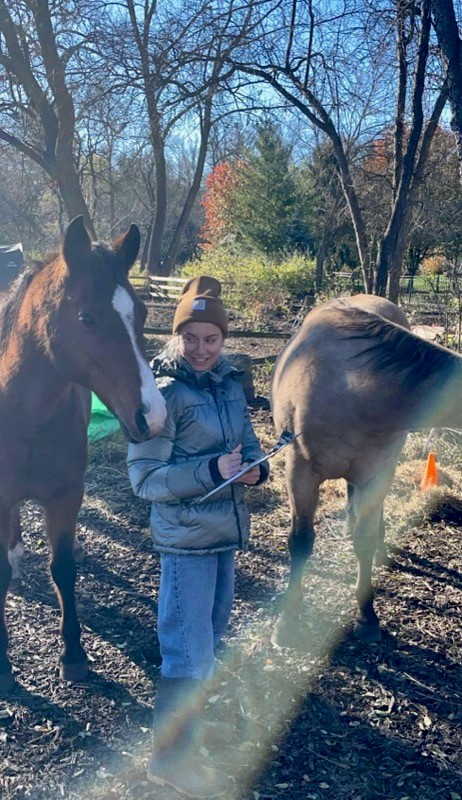
Both Aidan and Olivia plan to continue working in conservation. Olivia said, “the more I work this job, the more I love it.” Describing the impacts that she believes they are making, she said, “You can do so much just f rom small changes on your field. Because we are so far up the Mississippi River, and everything basically goes down, I think it’s so important in our state to implement those practices, because Illinois is a huge agricultural state. If we can make a big impact by small changes, I think it’s worth it.”
